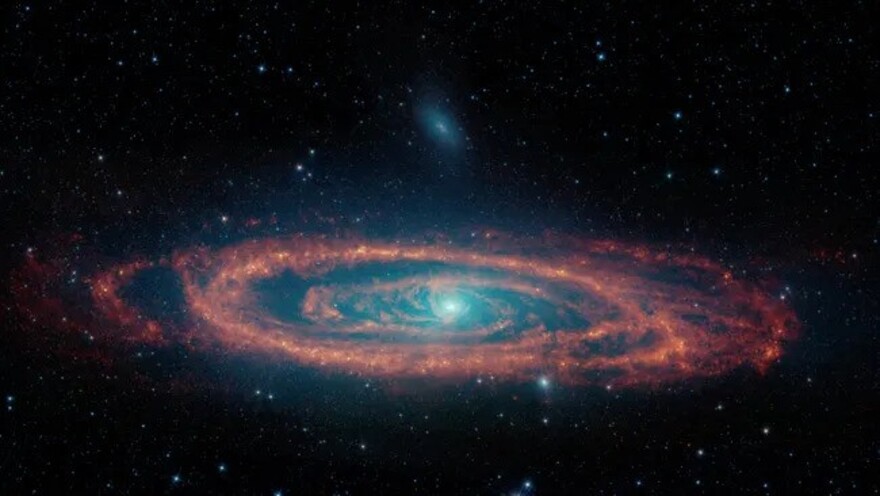Scientists have investigated how the supermassive black hole at the center of the Andromeda galaxy absorbs matter from the environment. They come to the conclusion that, unlike a bunch of similar objects, it “eats” very carefully.

Dust flows in the neighboring galaxy
Scientists have found evidence of extremely long dust flows spiraling towards the supermassive black hole that lives in the heart of our neighbor, the Andromeda Galaxy. It seems that these giant flows quietly but continuously feed the cosmic abyss, and this has probably been going on for many centuries. These “space rivers”, like black holes billions of times heavier than our Sun, remain extremely quiet even when they absorb dust, gas and unlucky stars nearby. We owe this discovery to scientists from Germany, Spain and Chile, who analyzed archival images obtained using the already decommissioned Spitzer Space Telescope.
Supermassive black holes have previously been seen in voracity. They absorb such large chunks of incandescent matter that their dark silhouettes shine brighter than entire galaxies crowded with stars. However, how this happens in the more “quiet” representatives of their class (for example, those who hide in the hearts of Andromeda and our Milky Way) has so far been unclear.
According to a study published last year in the Astronomical Journal, these silent beasts feed on flows of gas that spiral into them slowly and steadily, with such delicacy that the accretion disk around them rarely fluctuates in brightness. This space etiquette can be compared to water flowing down a drain, astronomers said on Thursday (May 9) in a NASA statement.
Supermassive black hole in the Andromeda Galaxy
The Andromeda Galaxy, located about 2.5 million light-years from Earth, is the closest to the Milky Way and one of the few star systems visible to the naked eye on dark, moonless nights. Unlike the characteristic spiral arms curved around the center of our galaxy, its core is surrounded by numerous dust rings.
To come to their conclusions, astronomers first simulated how the material around Andromeda’s black hole behaves over time. This simulation showed that a tiny disk of hot gas could form near it, which would feed it, and then be replenished by many other flows of gas and dust from the surrounding surroundings.
The researchers found that these flows must be of a certain size and speed in order to provide stable power, without which the black hole will “regurgitate” matter, and its brightness will change. Of course, when the scientists compared their findings with the Spitzer telescope data, they found that the telescope had already detected dust spirals within the required limits.
Research based on archival data
“This is a great example of scientists reexamining archival data to reveal more about galaxy dynamics by comparing it to the latest computer simulations,” said study co-author Almudena Prieto, an astrophysicist at the Institute of Astrophysics of the Canary Islands and the University Observatory of Munich, in a statement. “We have 20-year-old data telling us things we didn’t recognize in it when we first collected it.”
The findings contradict some of last year’s results from another group of astronomers, who suggested that all such objects absorb neighboring matter in the same way, regardless of their appetite. The observed glow of matter absorbed by hundreds of other supermassive black holes was incompatible with the orderly flow of matter. Such contradictions allow astronomers to overestimate what we know about their behavior.
According to www.space.com
Follow us on Twitter to get the most interesting space news in time
https://twitter.com/ust_magazine


